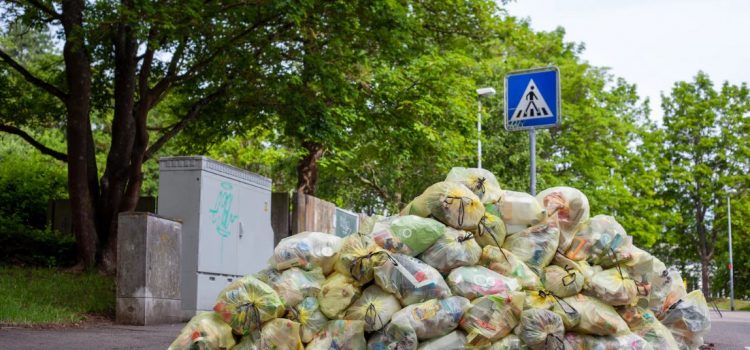
This is a free excerpt from one of Shortform’s Articles. We give you all the important information you need to know about current events and more.
Don't miss out on the whole story. Sign up for a free trial here .
Why is supermarket food waste getting out of hand? What can be done to prevent it?
US grocery stores throw out 123 million pounds of food each day. Advocates hope the newly reintroduced Food Date Labeling Act will help remedy part of the food waste problem. But time will tell whether the bipartisan-backed bill can withstand objections from the food industry.
Below we’ll take a look at the history of supermarket food waste and possible remedies for the situation.
Supermarkets Produce So Much Waste
Each year, US grocery stores and restaurants throw out 40 million tons of food—accounting for 30-40% of the food supply in a nation where 34 million people don’t have enough to eat. Grocery stores comprise 30% of all retail sector food waste, sending 1.55 million tons of it straight to landfills in 2021, where it released planet-warming gases.
Background
Food waste in supermarkets amounts to about 123 million pounds of food every day—a practice that costs them $18 billion a year, on top of the lost opportunity to feed millions and the toll on the environment.
Though some retailers are working to curb food waste, barriers exist to doing so. First, many stores are reluctant to donate food, afraid they’ll be held liable if people get sick from it. Experts say that, in fact, legal liability protections and tax benefits exist for businesses that donate food, but many aren’t aware of them.
A second contributor to grocery store food waste is confusion around date labels on food—an issue with a long, complicated history that led the federal government to require and regulate the date on just one food item: infant formula.
Additional factors that contribute to grocery store food waste include:
- Perishable food item losses. Produce accounts for $15 billion in annual losses.
- Overstocked store product displays that lead store staff and customers to over-handle and damage food.
- Availability of ready-made food until store closing, which leads many retailers to throw out edible, unsold food.
- Elimination of visually imperfect fruits and vegetables and unsold holiday- and season-specific foods.
- Packaging issues:
- Produce comes in preset quantities, restricting stores’ ability to buy only the amount they need.
- Multiple items grouped in one package. If one apple in a bag is rotten, the whole bag gets tossed.
- Damaged packaging. Stores toss edible food they can’t sell due to damaged packaging.
- Understaffing. Understaffed stores can’t efficiently monitor perishable foods, rotate stock, and mark down prices, leading more food to go bad and get thrown out.
Food Waste Solutions
Environmental and food waste prevention experts offer numerous recommendations to reduce grocery store food waste. They assert that the US government should:
- Strengthen liability protections for stores that donate food
- Create clearer food labels.
They further state that grocery stores should:
- Avoid overstocking.
- Downsize product displays.
- Markdown older products.
- Let prepared foods run out before stores close
- Donate more. Grocery stores should partner with food kitchens and other organizations to reduce waste and triage food where it’s needed and can be repurposed.
- Sell to salvage grocery stores. Grocery stores can sell excess food they’ve been unable to sell but that’s safe to eat to salvage stores.

Want to fast-track your learning? With Shortform, you’ll gain insights you won't find anywhere else .
Here's what you’ll get when you sign up for Shortform :
- Complicated ideas explained in simple and concise ways
- Smart analysis that connects what you’re reading to other key concepts
- Writing with zero fluff because we know how important your time is






